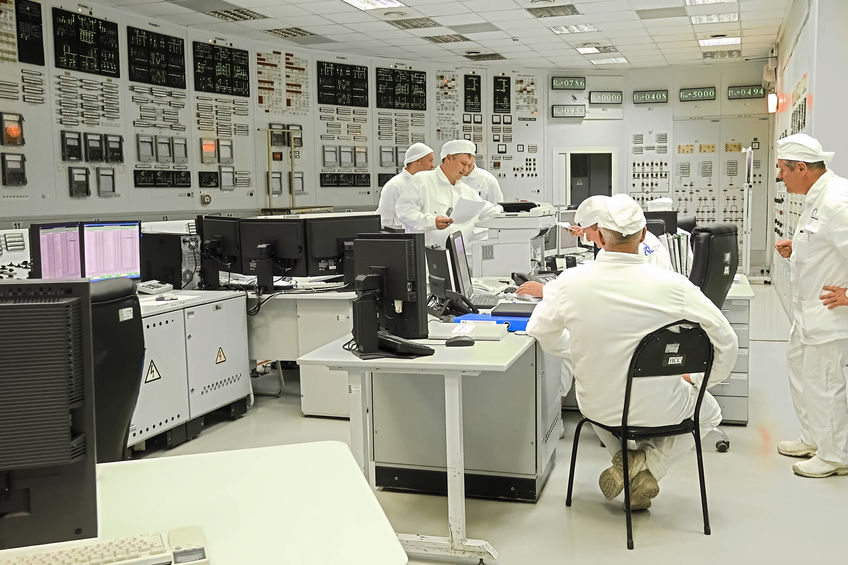When she and Sen. Ed Markey introduced the “Green New Deal” a year ago, newly elected Rep. Alexandria Ocasio-Cortez did not mention nuclear energy as part of the future. Later, Ocasio-Cortez admitted she still had “an open mind” on evolving nuclear energy technologies while insisting that older plants be shuttered.
But since then she has endorsed Sen. Bernie Sanders, whose platform includes a moratorium on nuclear power plant license renewals – and who states “we must stop building new nuclear power plants, and find a real solution to our existing nuclear waste problem.”
Truth is, while the U.S. even today leads the world with nearly a hundred operational nuclear facilities, nuclear remains controversial. Should a Sanders-led U.S. follow Germany’s lead in decommissioning existing nuclear plants and not building new ones, a new world nuclear energy leader might emerge quickly.
China, while known for building myriads of coal-fired power plants, has also been busy. A 2017 article noted the Chinese had 38 nuclear plants in operation and another 19 under construction, and was thus “the fastest expanding nuclear power generator in the world.”
But it is Russia that is making the most noise about nuclear energy of late. Last July, Russian President Vladimir Putin went on the offensive against the anti-growth technocrats and others who champion wind and solar as the energy future, insisting that “It is impossible and pointless to try to stop human progress.”
Speaking at the 2nd Global Manufacturing and Industrialization Summit in Yekaterinburg, Russia, Putin instead proclaimed, “Super-efficient scientific, engineering, and manufacturing solutions will help us establish a balance between the biosphere (the realm of nature) and the technosphere (the realm of creative reason). Fusion energy which in fact is similar to how heat and light are produced in our star, the sun, is an example of such nature-like technologies.”
Putin spoke glowingly of the work of Russia’s Kurchatov Institute, which has already begun a project on a fission-fusion hybrid reactors expected to be operational later this year, and its role in driving the advanced science as a creative force for the International Thermonuclear Experimental Reactor (ITER) program in France, which is scheduled to go online with its first plasma by 2025.
As explained by Caroline Delbert, the Russian fission-fusion hybrid reactor runs on thorium, which is far less reactive and much more plentiful than uranium. Its “down to earth” design, Delbert acknowledges, makes for a shorter time to startup.
Russia’s nuclear power initiatives extend well beyond that country’s borders. On February 8, India’s Ambassador to Russia, Venkatesh Varma, announced that Russia will design 20 more nuclear power plants to be built in India over the next two decades, building on 18 years of nuclear cooperation between the two countries.
Russia and India are also helping Bangladesh construct its first nuclear power plant and may expand their collaborations. Varma noted, “Russia already has agreements in this field with a number of African countries. Ethiopia is one of them, and there are some countries in the Middle East. It will be Russian projects but with Indian cooperation.”
Meanwhile, the U.S., much of Western Europe, and post-Fukushima Japan are at best conflicted over nuclear’s role in providing reliable, affordable energy in the face of burgeoning demand. Some EU states are strongly anti-nuclear and have structured their electricity markets in response to populist support for wind and solar. The next decade will likely see a decline in nuclear generating capacity, and only Finland, France, and Slovakia are building new nuclear facilities.
Still, there are some hopeful signs that the West may be on the verge of a new era in nuclear energy.
- TerraPower announced a collaboration with GE Hitachi Nuclear Energy to pursue a public-private partnership to design and construct the Versatile Test Reactor for the U.S. Department of Energy.
- The Princeton Plasma Physics Laboratory announced plans to rebuild the National Spherical Torus Experiment (NSTX) tokamak reactor, renew its commitment to ITER< and build a smaller, cheaper prototype power plant.
- A Rolls-Royce led consortium plans to build 17 “revolutionary mini nuclear power stations” to replace Britain’s eight aging large-scale nuclear power plants. Mass production at new factories should lead to shorter construction times and lower costs.
Will the West again match Russia’s apparent zeal for new-design nuclear power plants? Maybe not. Canadian journalist Matthew Ehret argues that the West has for fifty years been dominated by a new “science of limits” that sees mankind’s biggest threat as mankind itself.”
Moreover, as Open Europe’s Pieter Cleppe bemoans, “While many proponents of renewables and battery technology point at how future technological development will sort out their many shortcomings, very few assume technological progress is possible for nuclear technology. On the contrary, innovations are routinely dismissed out of hand and painted as dangerous.”
Westerners should listen to Bangladeshi businessman and nuclear energy advocate Kazi Zahin Hasan. In his view “Modern cities need continuous power; solar and wind cannot provide this without expensive battery storage, which no city or utility has been willing to buy. That’s why after billions of dollars of investment in solar and wind power, there is not a single major city which is powered exclusively by solar or wind.”
